Showing 11-20 of 33 results
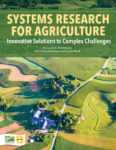
Systems Research for Agriculture
Practical information for researchers, educators and extension professionals seeking to understand and apply systems research to agriculture.
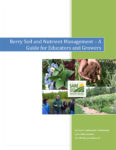
Berry Soil and Nutrient Management Guide for Educators and Growers
This manual has been designed as a comprehensive guide for educators and commercial berry growers interested in improving berry crop soil and nutrient management.
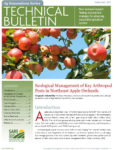
Ecological Management of Key Arthropod Pests in Northeast Apple Orchards
Apples are an important crop in the Northeast, grown for both fresh market and processing. Growers have a challenging task managing insects, mites and diseases. By some estimates, growers may spend up to 25 percent of their production costs on pest management. This technical bulletin outlines strategies developed from SARE-funded projects in Massachusetts and Pennsylvania, including biologically based pest control, orchard architecture and development of materials approved for organic production.
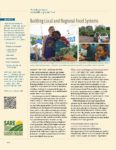
Farm to Table: Building Local and Regional Food Systems
More and more, farmers, ranchers, ag professionals, community organizers and others are striving to reconfigure the nation's food system so more value stays in food-producing communities.
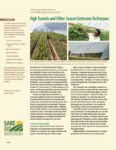
High Tunnels and Other Season Extension Techniques
From low covers to high tunnels, from hoop houses to greenhouses—producers are finding ever more innovative ways to extend the growing season, and their income stream.
Is Fish Waste Compost Worth the Mess and Effort?
A South Carolina farmer discusses the results of using fish waste compost in vegetable production.
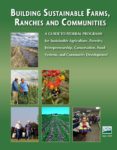
Building Sustainable Farms, Ranches and Communities
This guide lists funding opportunities offered by federal programs, and is indispensable for anyone seeking government help to foster their innovative enterprise in forestry and agriculture.
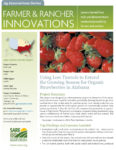
Using Low Tunnels to Extend the Growing Season for Organic Strawberries in Alabama
This project was designed to determine if the strawberry harvest season could be extended, potentially allowing farmers to get their strawberries to the market early for premium prices.
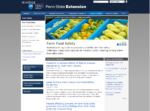
Farm Food Safety
This website provides educational resources for farmers interested in learning about GAPs. Some materials available in Spanish.
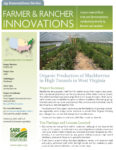
Organic Production of Blackberries in High Tunnels in West Virginia
The objective of this season extension project was to evaluate the feasibility of growing blackberries organically within a commercial high tunnel or hoop house in central West Virginia, including pest management, cultivar and management considerations.